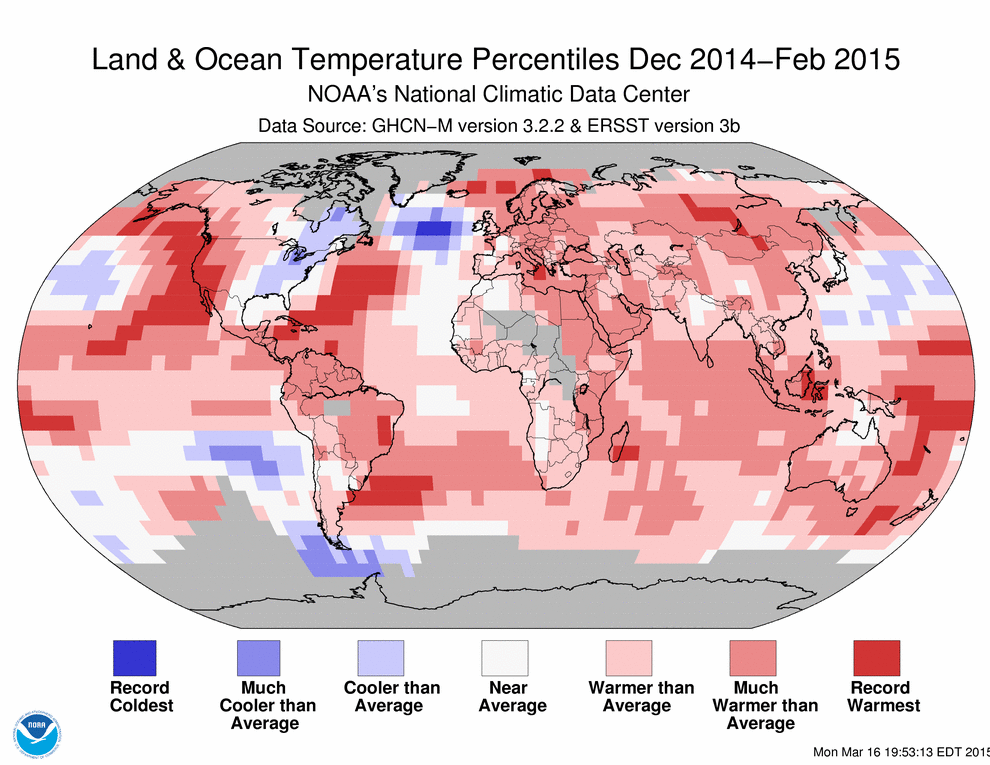Barack Obama Is Biologically Superior
The world’s most famous climate scientist just outlined an alarming scenario for our planet’s future

The world’s most famous climate scientist just outlined an alarming scenario for our planet’s future
With his 1988 congressional testimony, the then-NASA scientist is credited with putting the global warming issue on the map by saying that a warming trend had already begun. “It is time to stop waffling so much and say that the evidence is pretty strong that the greenhouse effect is here,” Hansen famously testified. ...... Now Hansen — who retired in 2013 from his NASA post, and is currently an adjunct professor at Columbia University’s Earth Institute — is publishing what he says may be his most important paper. Along with 16 other researchers — including leading experts on the Greenland and Antarctic ice sheets — he has authored a lengthy study outlining an scenario of potentially rapid sea level rise combined with
more intense storm systems
...... The authors conclude that 2 degrees Celsius global warming—the widely accepted international target for how much the world should limit global warming—is “highly dangerous.” ...... the decline of West Antarctica could now be “irreversible.” ...... a non-linear process could be at work, triggering major sea level rise in a time frame of 50 to 200 years ..... major ice loss from both Antarctica and Greenland will change the circulation of the oceans, as large volumes of cold, fresh water pour into the seas. This freshening or decreasing saltiness of the ocean, at both poles, could ultimately block the oceans’ overturning circulation, in which (in the northern hemisphere) warm water travels northward, and then colder, denser water sinks and travels back south again. ........... there is already evidence of such cooling in the north Atlantic — presumably due to ice loss from Greenland. Note the large blue (cold) anomaly from this recent analysis of last winter’s global temperatures ....... Around Antarctica, meanwhile, sea ice has been growing — potentially another indicator of cooling and freshening at the ocean surface due to ice loss from the frozen continent. ..... In the model employed by Hansen and his coauthors, this cooling and freshening of the oceans eventually leads to a shutdown of the oceans’ circulation, and warm waters trapped at depth below a cold fresh surface layer in the Antarctic region, continually eating away at ice sheets from below. It also triggers a globe with ever-warming tropics but cold poles — leading to a large contrast in temperatures between the mid-latitudes and the polar regions. ........ A larger temperature contrast between the tropics and the poles, the researchers posit, would then strengthen winter storms or so-called extratropical cyclones, which draw their energy from such contrasts. The study therefore contemplates more powerful storms. It notes research suggesting that in the Eemian period, the last time the world saw major sea level rise of as much as 5 to 9 meters (between 16 and 30 feet), gigantic waves apparently moved huge boulders from the seafloor to the top of hills in the Bahamas.......... “There were storms, and a lot of more catastrophic type events associated with this big climate shift.” ........... The Eemian, the research suggests, may have only reached global average temperatures about 1 degree Celsius warmer than today — but nonetheless, featured these major changes. ........ “Ice mass losses from Greenland, West Antarctica and Totten/Aurora basin in East Antarctica are growing nonlinearly with doubling times of order 10 years,” notes the study. Elsewhere, it notes that “Doubling times of 10, 20 or 40 years yield sea level rise of several meters in 50, 100 or 200 years.” ...... “if [greenhouse gases] continue to grow, the amplifying feedbacks in the Southern Ocean, including expanded sea ice and [Southern ocean overturning circulation] slowdown likely will continue to grow and facilitate increasing Antarctic mass loss.” ........ sea level rise is “the big impact of human made climate change.”

No comments:
Post a Comment